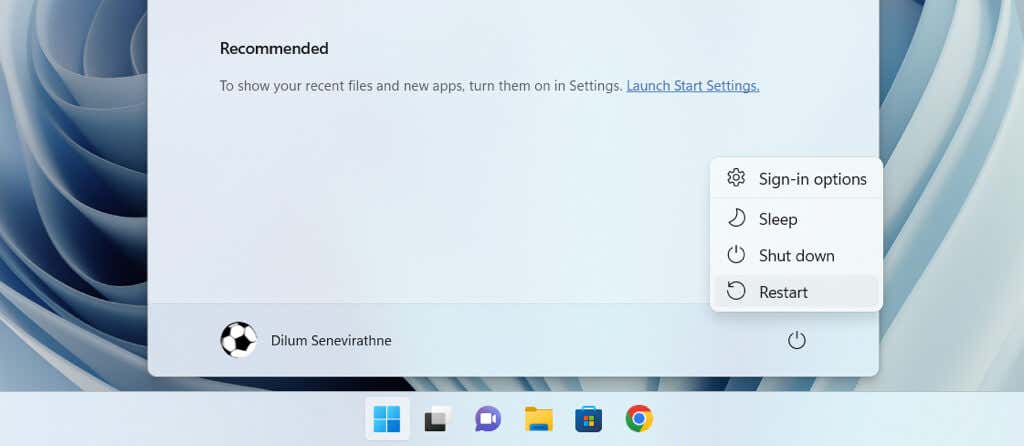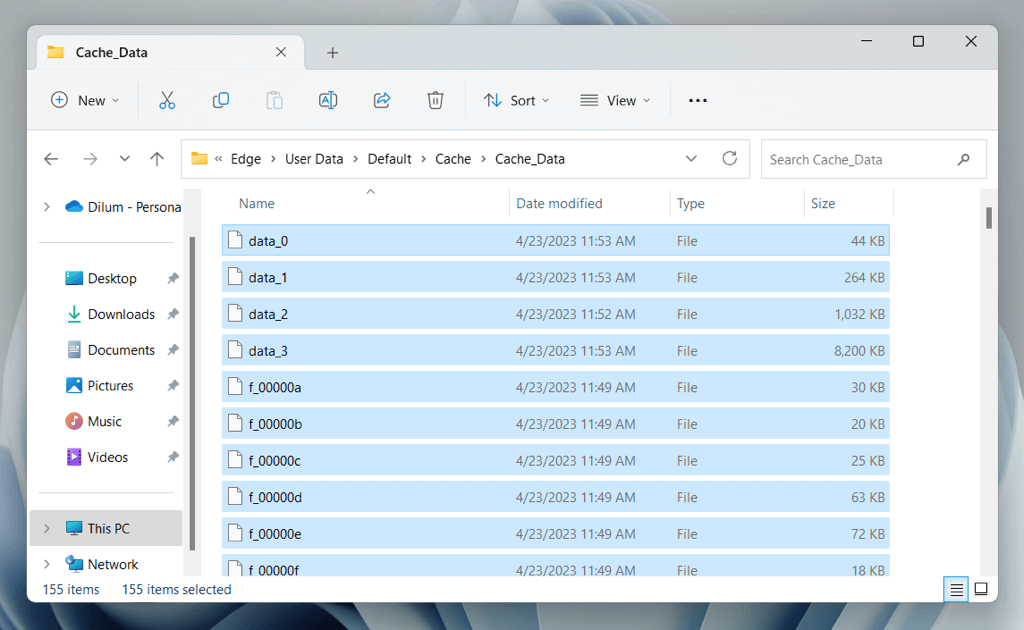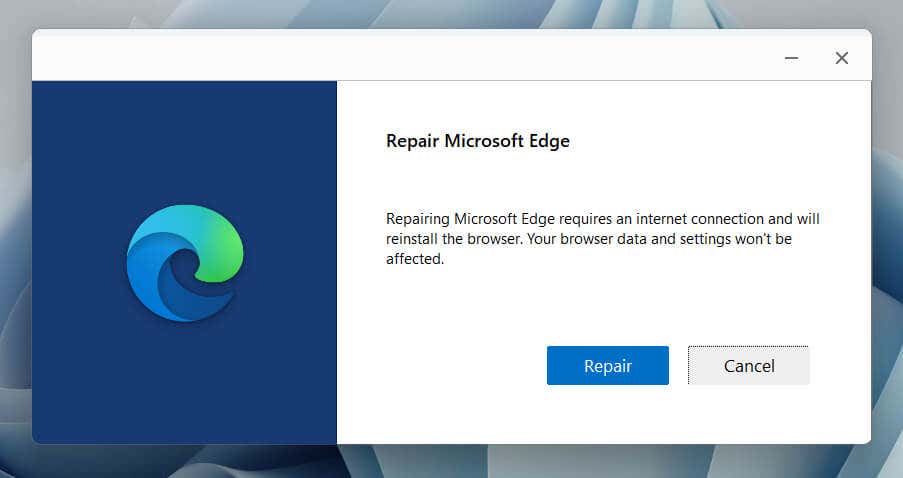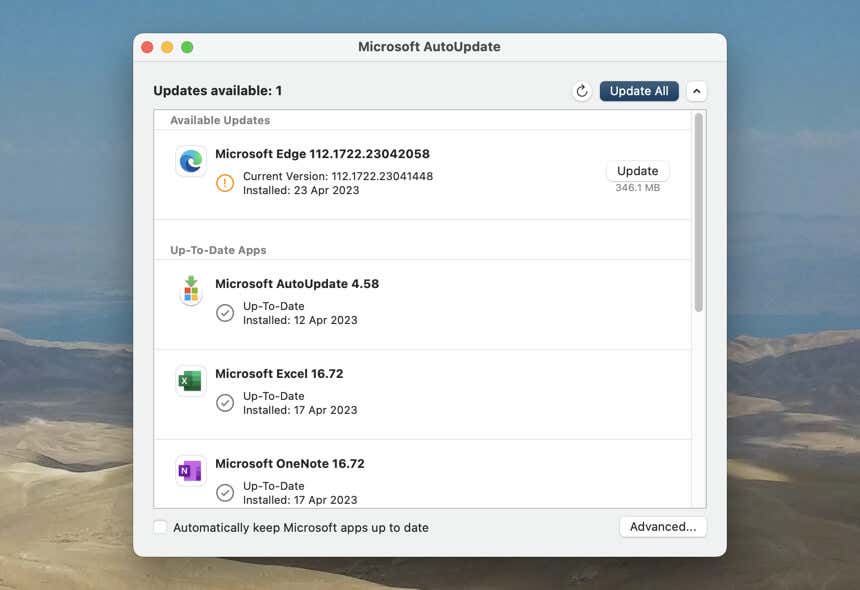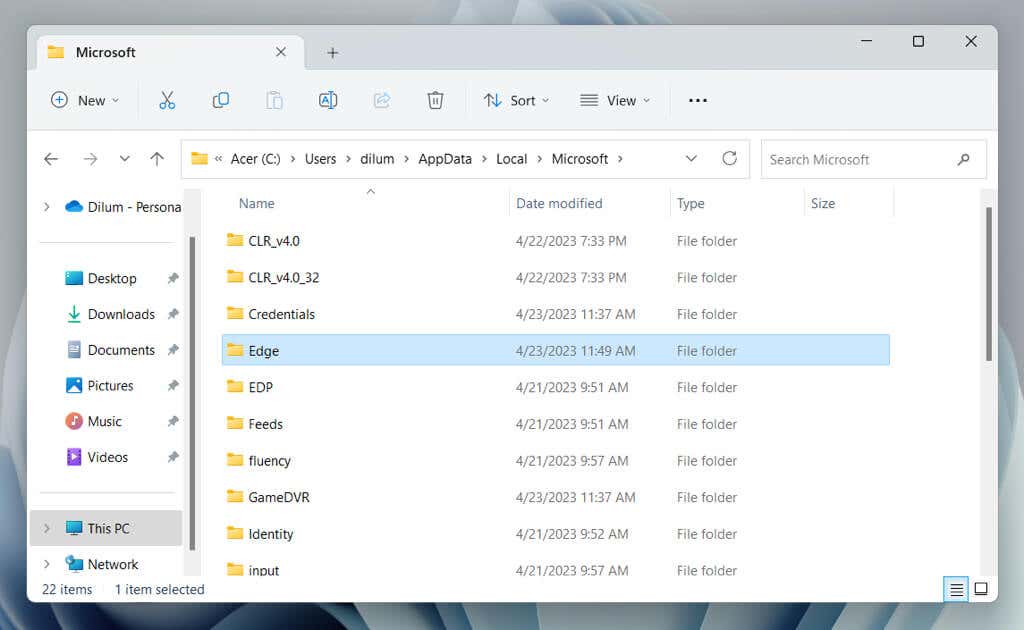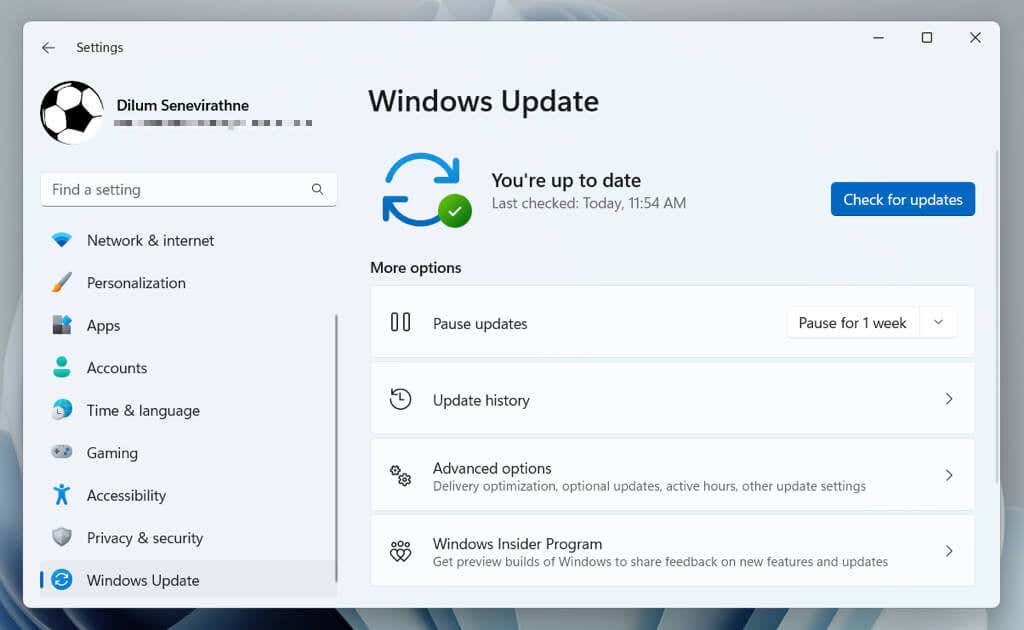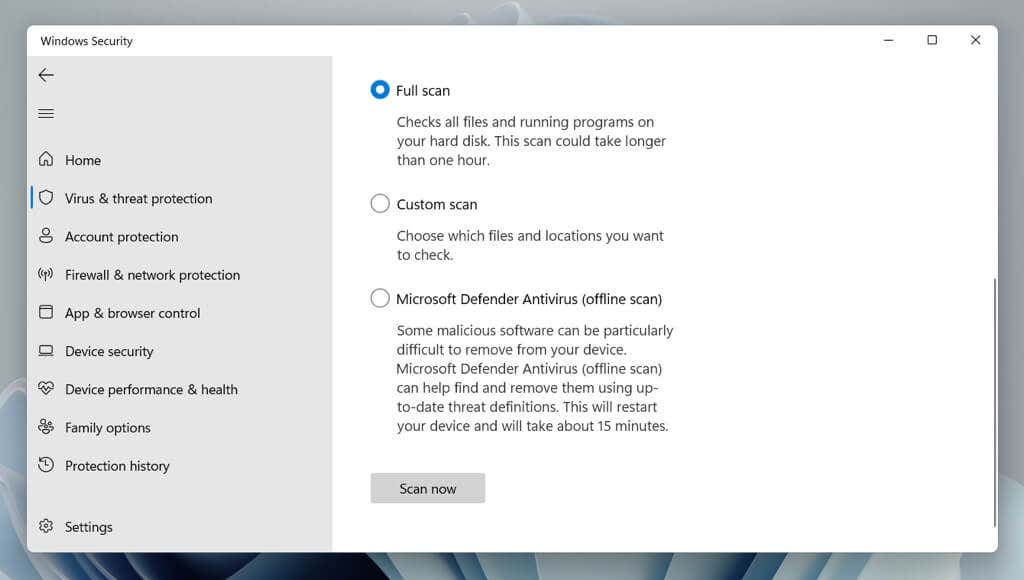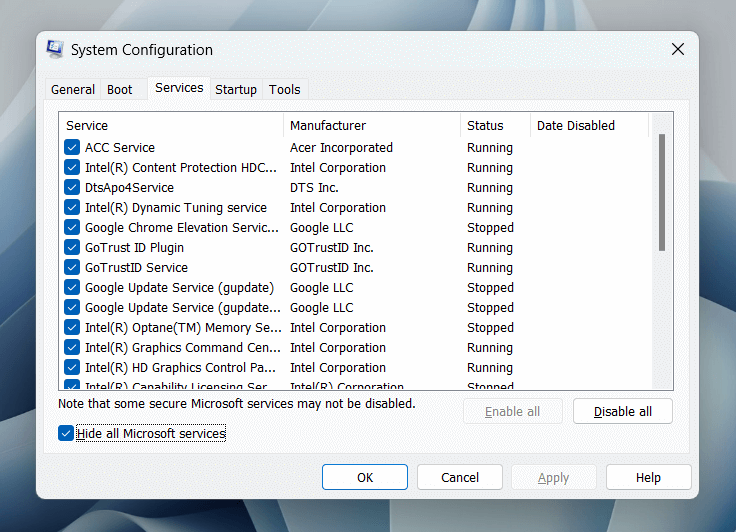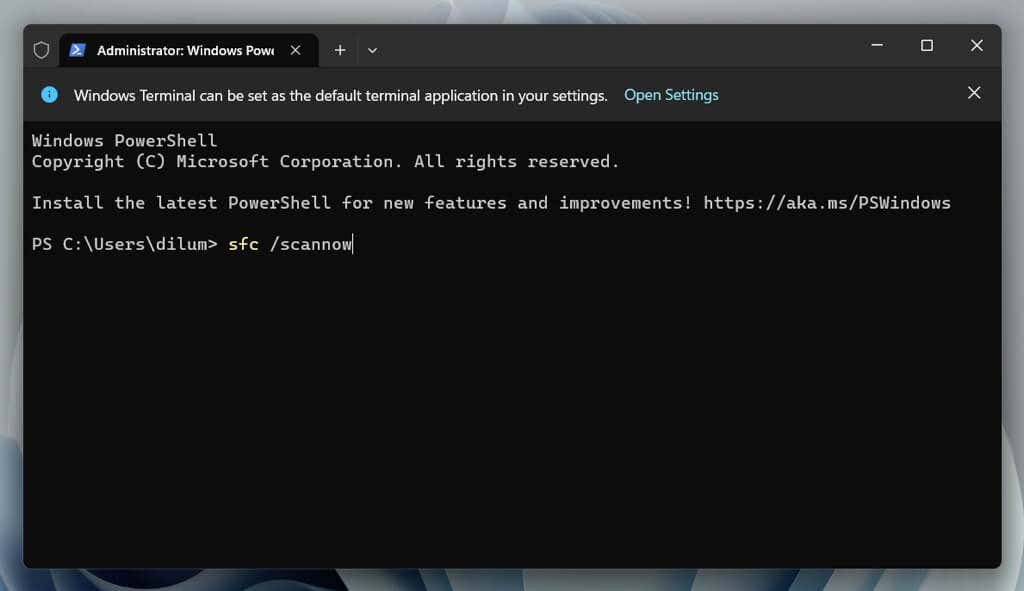This tutorial will walk you through various troubleshooting tips to help you fix Microsoft Edge not opening on the PC and Mac.
1. Force-Quit Microsoft Edge
Stuck background processes can prevent an application from opening; the same goes for Microsoft Edge. Therefore, it’s helpful to force-quit the processes related to the browser before you attempt to reopen it.
Force-Quit Edge on Windows
Force-Quit Edge on macOS
2. Restart Your PC or Mac
If force-quitting and relaunching the Microsoft Edge browser does not help, it’s a good idea to follow by restarting your PC or Mac. On a Windows PC, open the Start menu and select Power > Restart.
If you use a Mac, select Restart on the Apple menu, disable the Reopen windows when logging back in option, and select Restart again to confirm.
3. Clear Browsing Data for Edge
Obsolete or corrupt files in the web cache stop browsers like Edge from working correctly, so the following fix involves clearing your browsing data. The standard procedure is to delete the Edge cache through its interface, but since you have trouble opening the browser, you must use the following File Explorer/Finder-based workaround.
Delete the Edge Cache in Windows
%localappdata%\Microsoft\Edge\User Data\Default\Cache\Cache_Data
Delete the Edge Cache in macOS
~/Library/Caches/Microsoft Edge/Default/Cache/Cache_Data
4. Repair Microsoft Edge (Windows Only)
Windows 10 and 11 have a built-in Microsoft Edge repair tool capable of fixing corruption with the browser installation. The tool also updates the browser to its latest version. To run it:
5. Update Microsoft Edge
The following fix is to update Microsoft Edge since newer versions include bug fixes for severe issues. Since you can’t open the browser, you must use the repair tool in Windows (check the section above) or the Microsoft AutoUpdate tool in macOS. To run the Microsoft AutoUpdate tool on a Mac, you must: /Library/Application Support/Microsoft/MAU2.0
6. Reset Microsoft Edge
Resetting Microsoft Edge disables browser extensions and reverts all settings to defaults, helping you fix launch errors caused by corrupt configurations and conflicting add-ons.
Warning: A Microsoft Edge reset will permanently delete bookmarks and passwords that have yet to sync to your Microsoft Account.
Restore Microsoft Edge on Windows
%localappdata%\Microsoft\
Restore Microsoft Edge on macOS
~/Library/Caches/
7. Reinstall Microsoft Edge (macOS Only)
If you use a Mac, you have the option to reinstall Microsoft Edge and fix browser corruption issues. To do that: Optional: Use a dedicated Mac app removal tool like AppCleaner to remove all files and folders related to Edge before reinstalling it.
8. Update Windows and macOS
Operating system-related issues are another reason that can prevent Microsoft Edge from running, especially on the PC because the browser is tightly linked to Windows. Update the system software and check if that helps.
Update Windows
Update macOS
9. Run an Anti-Malware Scan
If none of the fixes above help, it could be that a web browser hijacker is causing problems with Microsoft Edge.
In Windows, you can use Windows Security to perform a malware scan. To run it:
Alternatively, you can scan using a dedicated third-party antivirus removal utility like Malwarebytes. Check these top antivirus software for macOS if you’re on a Mac.
10. Disable Third-Party Startup Apps
Third-party services and apps running at computer startup can conflict with Microsoft Edge and stop it from launching. Disable them and check if that makes a difference.
Perform a Clean Boot in Windows
Restart your computer and check if Edge opens correctly. If it does, reopen the System Configuration app and Task Manager and reactivate the disabled services and apps one by one or in batches until you isolate the problematic item.
Disable Startup Apps on Mac
Restart your computer and open Microsoft Edge. If it launches correctly, revisit the Login Items pane and reactivate the startup apps individually or in batches until you isolate the conflicting item.
11. Run an SFC Scan (Windows Only)
In Windows 10 and 11, you can run an SFC (System File Checker) scan to fix application launch issues caused by system file corruption. To do that: sfc /scannow
Back to Browsing on the Edge
From checking for updates and disabling extensions to resetting the browser and performing a clean boot, you’ve got various methods to fix Microsoft Edge if it refuses to open. If none of the fixes above help, use a different browser for Windows and macOS—like Google Chrome, Firefox, or Safari—until Microsoft pushes out an update that addresses the issue.


